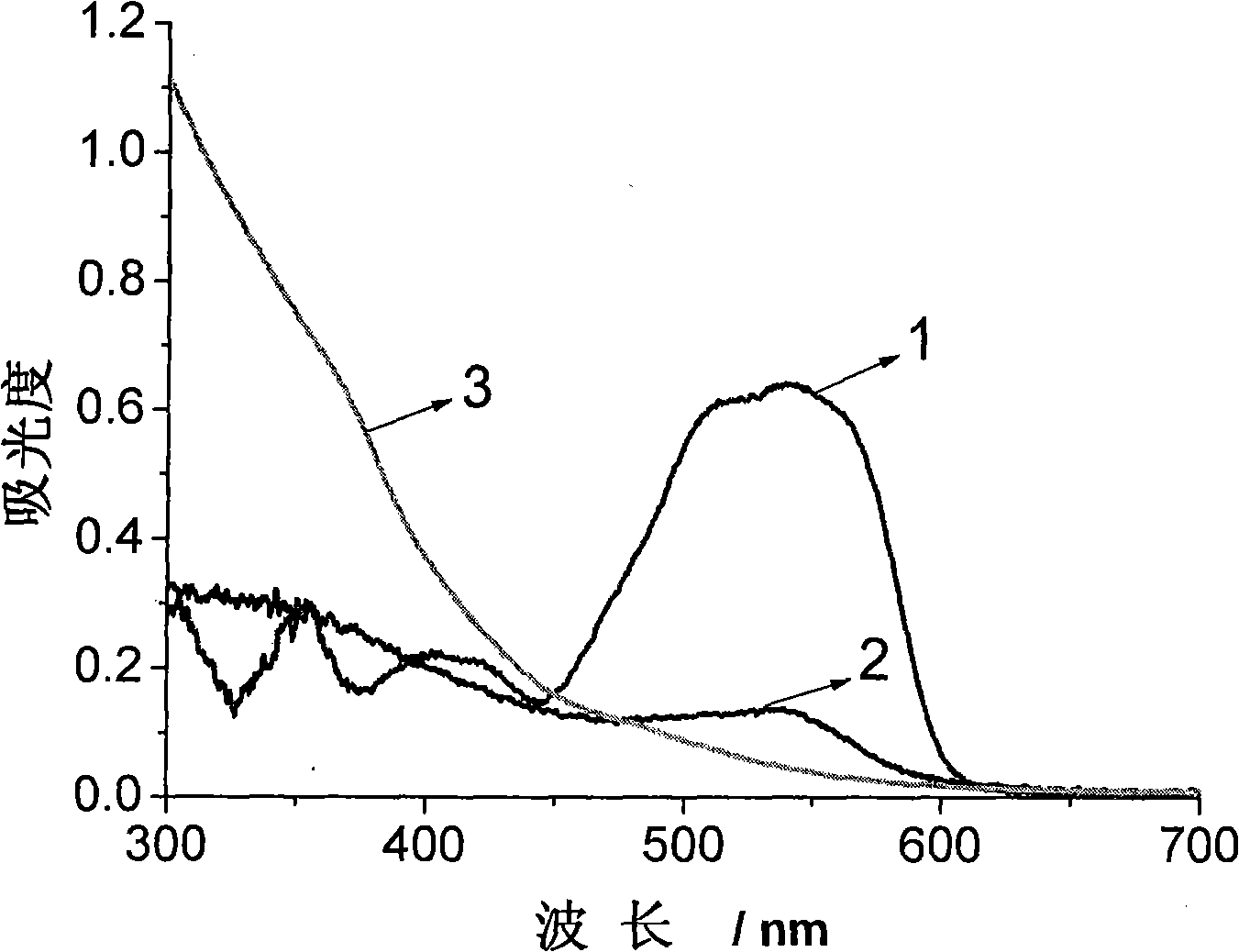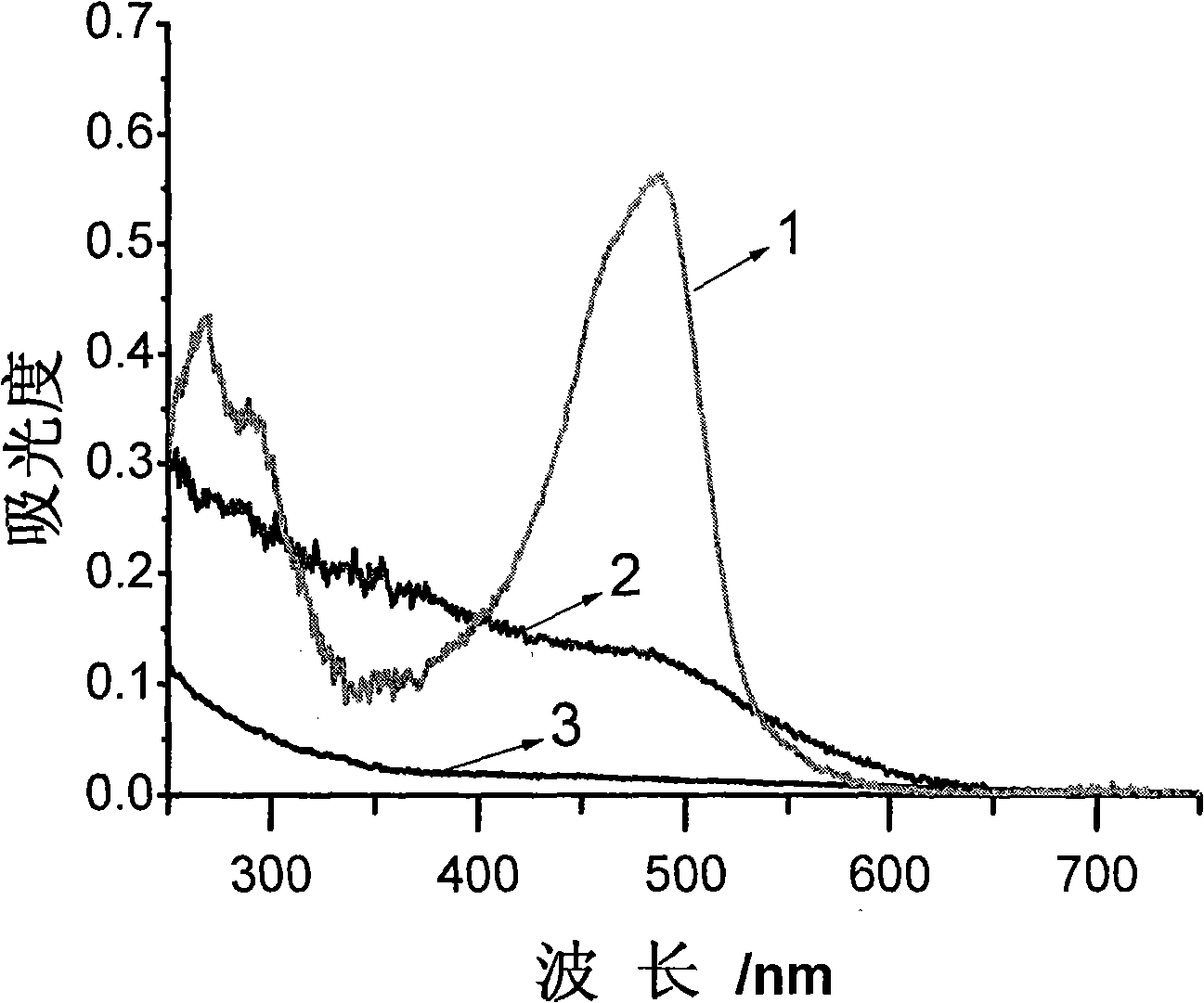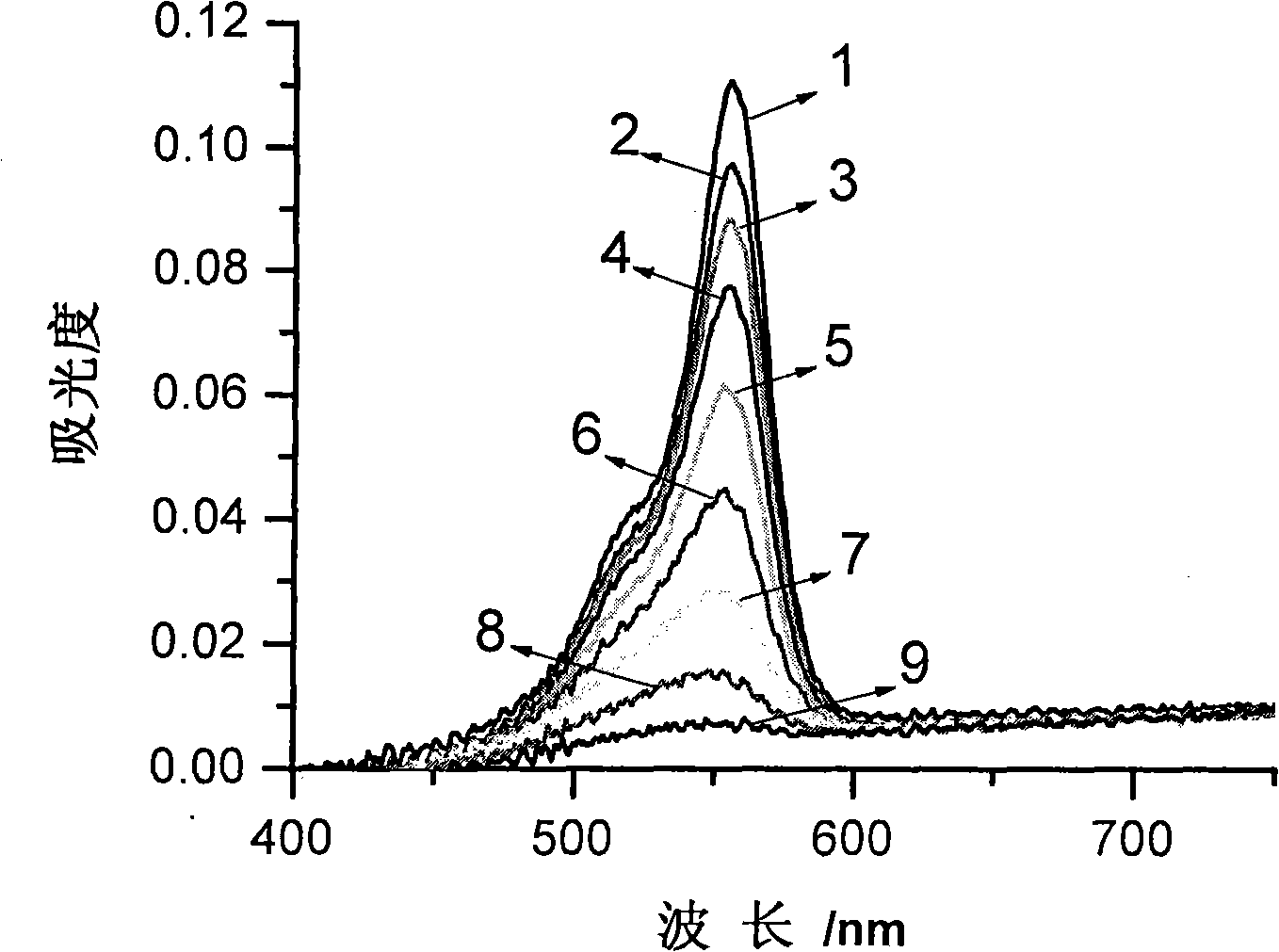Processing method for light concentration organic pollutant in water
A technology for organic pollutants and treatment methods, which is applied in the field of water treatment for removing organic pollutants, can solve the problems of wasting photocatalysts, high activated carbon prices, and high operating costs, and achieves stability, reusability, and long adsorption service life. , Good reaction heat transfer effect
- Summary
- Abstract
- Description
- Claims
- Application Information
AI Technical Summary
Problems solved by technology
Method used
Image
Examples
Embodiment 1
[0020] Embodiment 1: weighing 3.92gC 16 (CTAB, cetyltrimethylammonium bromide) was added to a polypropylene bottle, 68ml of deionized water was added, and the temperature was kept at 30°C; 4.66g of Na 2 SiO 3 9H 2 O, start stirring, the solution is transparent; quickly add 7ml of ethyl acetate, and stop stirring after 30s; leave the resulting solution at room temperature for 6h, and then place it in a 90°C oven for 65h; then filter and clean it with deionized water and ethanol; put Put it into the crucible and calcined at 600°C for 20h. The resulting SiO 2 Spherical particles, particle size 2 ~ 4μm, pore size 10.4nm, 1.5cm 3 / g, 583.5cm 2 / g.
Embodiment 2
[0021] Embodiment 2: take by weighing SiO in embodiment 1 2 50 mg of granules, ultrasonically dispersed evenly, centrifuged to separate the upper clear layer, added polyallylamine hydrochloride solution, adjusted the pH value to 8.5, raised the temperature to 80 ° C, and kept it for 4 hours to obtain SiO 2 Modified particles;
Embodiment 3
[0022] Embodiment 3: take by weighing SiO in embodiment 1 2 50 mg of granules, ultrasonically dispersed evenly, centrifuged to separate the upper clear layer, added polystyrene amine hydrochloride solution, adjusted the pH value to 4, raised the temperature to 97 ° C, and kept it for 4 hours to obtain SiO 2 Modified particles;
PUM
| Property | Measurement | Unit |
|---|---|---|
| specific surface area | aaaaa | aaaaa |
| diameter | aaaaa | aaaaa |
| pore size | aaaaa | aaaaa |
Abstract
Description
Claims
Application Information
 Login to View More
Login to View More - R&D
- Intellectual Property
- Life Sciences
- Materials
- Tech Scout
- Unparalleled Data Quality
- Higher Quality Content
- 60% Fewer Hallucinations
Browse by: Latest US Patents, China's latest patents, Technical Efficacy Thesaurus, Application Domain, Technology Topic, Popular Technical Reports.
© 2025 PatSnap. All rights reserved.Legal|Privacy policy|Modern Slavery Act Transparency Statement|Sitemap|About US| Contact US: help@patsnap.com



